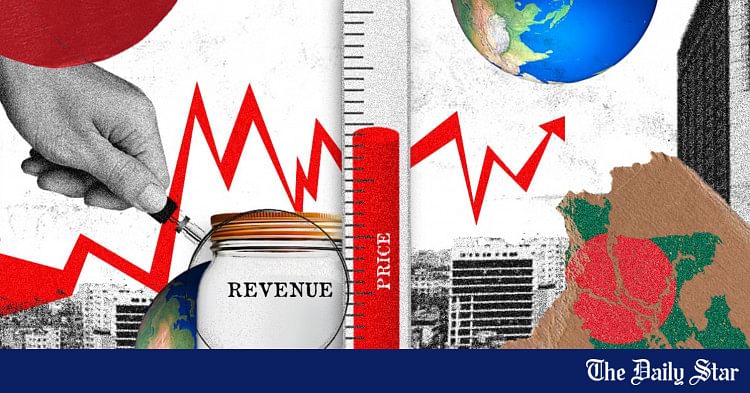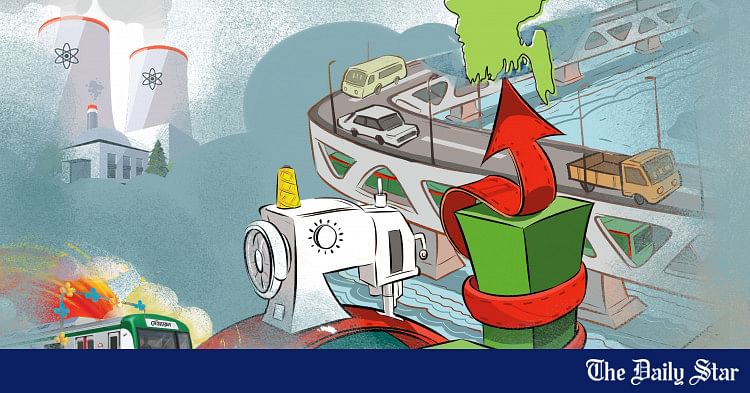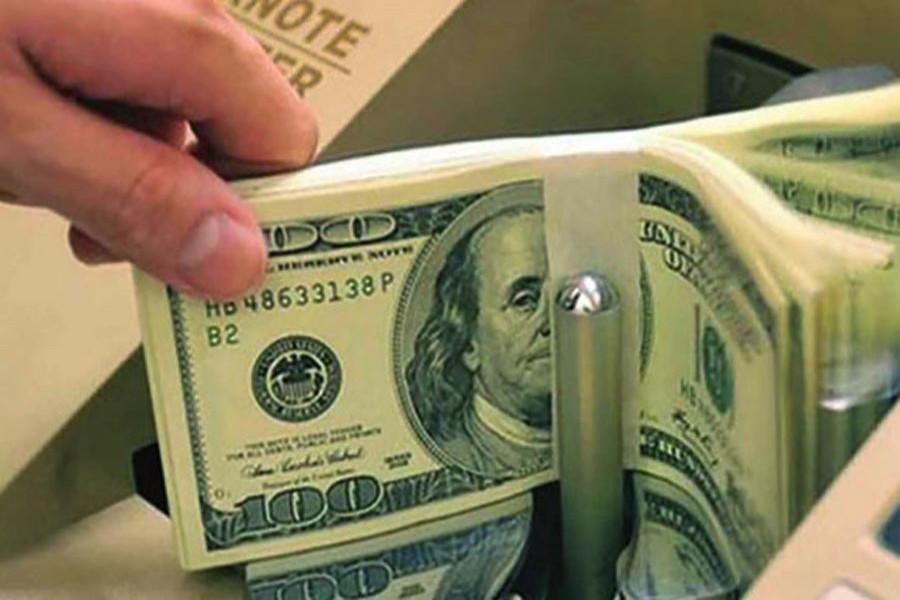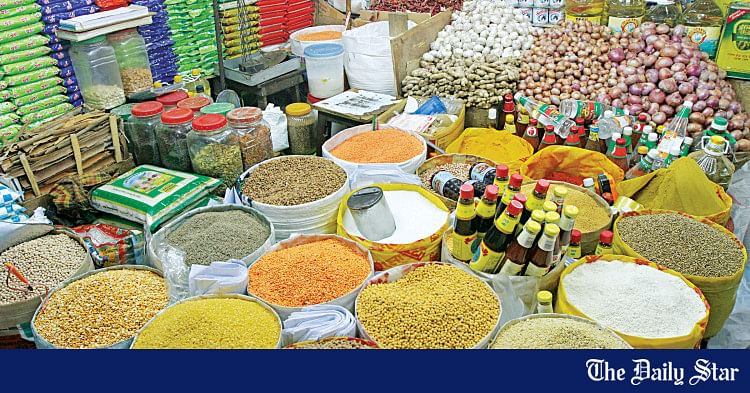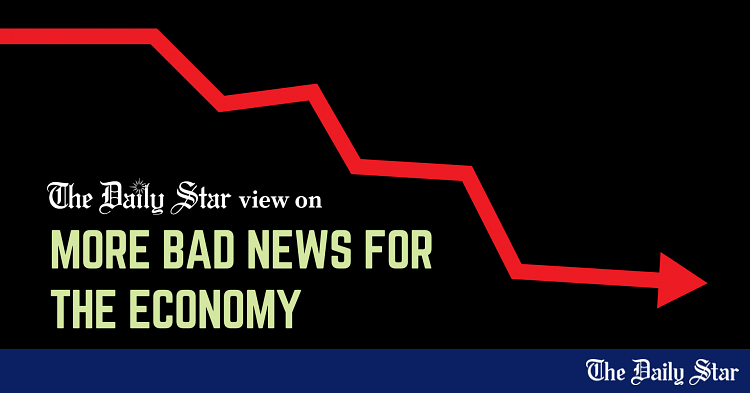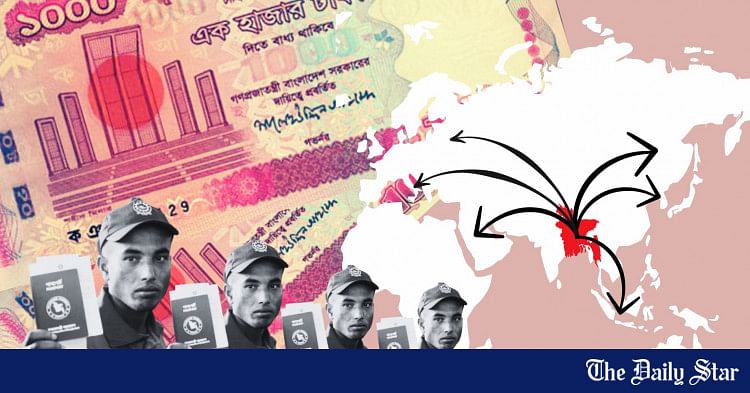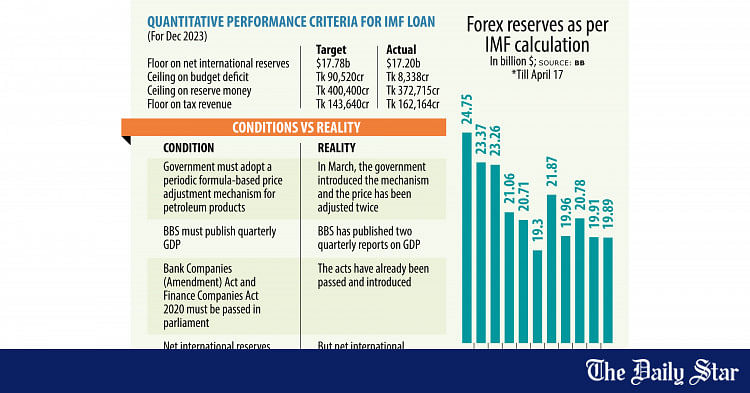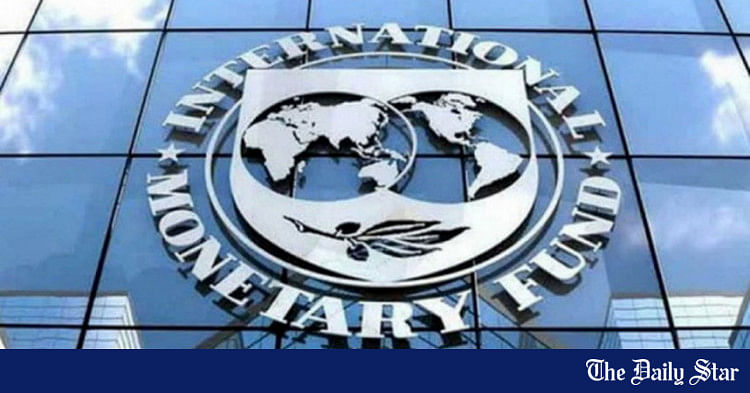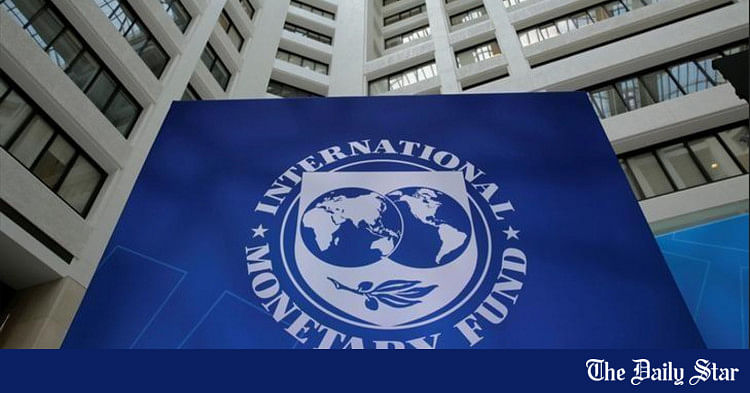- Copy to clipboard
- Thread starter
- #81
Saif
Senior Member
- Joined
- Jan 24, 2024
- Messages
- 15,397
- Reaction score
- 7,865
- Points
- 209
- Nation

- Residence

- Axis Group


Bangladesh has capacity to become upper middle income country by 2031: ICCB
Leading chamber body’s latest news bulletin highlights challenges, opportunities for Bangladesh economy in 2024
Bangladesh has capacity to become upper middle income country by 2031: ICCB
Leading chamber body's latest news bulletin highlights challenges, opportunities for Bangladesh economy in 2024

With targeted actions and appropriate policy followed by timely implementation to overcome the key challenges, Bangladesh has the capacity to become an upper middle income country by 2031, said a leading chamber body.
Bangladesh has achieved today's position by overcoming many obstacles and setbacks, according to the editorial of the current News Bulletin (January-March 2024) of International Chamber of Commerce-Bangladesh (ICCB) released on Monday.
Bangladesh has demonstrated remarkable progress in the last five decades, ICCB said.
The country's journey from one of the poorest at independence to a lower-middle-income nation within four decades is a testament to its resilience, policy decisions, and commitment to reducing poverty and fostering shared prosperity, said the World Bank in its recent publication, "World Bank in Bangladesh in 2024".
Macroeconomic stability with low levels of inflation and high levels of GDP growth have been key to Bangladesh's underlying strengths and major drivers of socio-economic achievements.
Bangladesh reached lower-middle income status in 2015 and is on track to graduate in 2026 as a middle income country and is aspiring to be an upper-middle income country by 2031.
However, Bangladesh after LDC graduation in November 2026, will experience significant preference erosion, ICCB said.
Although the EU and UK have offered to extend preferential duty-free market access for an additional three years, the export scenario to other markets will change immediately after graduation.
Bangladesh has a greater opportunity of increasing export to ASEAN, having a population of 661 million with a GDP of $3.08 trillion and trade exceeding $2.7 trillion.
According to 2020 data, Bangladesh imports goods worth nearly US$ 7 billion from ASEAN countries against its export of only $1 billion.
So, Bangladesh should give priority to Free Trade Agreement with ASEAN in order to increase its exports, ICCB said.
With several major infrastructure projects reaching completion, including Padma Multipurpose Bridge, Dhaka Elevated Expressway, Bangabandhu Tunnel, linking Dhaka to the tourist haven of Cox's Bazar, 3rd terminal at Hazrat Shahjalal International Airport, 2024 is anticipated to be a year to reap the benefits.
However, in 2024 the economy is also facing challenges on multiple fronts such as rising inflation, balance of payment deficit along with budget shortfall, declining foreign exchange reserve, contraction in remittances, a depreciating currency, rising income inequality, the demand-supply imbalance in the energy sector, and ailing banking sector crippled by loan defaults. Bangladesh could not bring down inflation whereas it has come under control in most countries, according to the ICCB.
Despite impressive growth rates, Bangladesh faces challenges in its export basket's diversification; more than 80 percent of Bangladesh's total export earnings come from garment exports.
Bangladesh has significant opportunities in leather and footwear, food processing, pharmaceuticals, light engineering, assembling plants, and API production. Both domestic investment and FDI will need to be geared towards these sectors.
Despite developing economic zones, adopting one-stop services and various other steps, Bangladesh is far behind Maldives and Sri Lanka in attracting FDI.
Bangladesh is the second-largest economy in the South Asian region.
Vietnam, comparable to Bangladesh, ranked fourth in Asia-Pacific after China, India, and Indonesia in attracting FDI.
The majority of total FDI inflows of US$ 274 billion at the end of 2022 into Vietnam were in the manufacturing sector, which accounts for 61 percent of the total registered FDI.
Bangladesh received an annual average of $2.92 billion in FDI as against Vietnam's US$ 36.61 billion.
FDI is one of the key elements for increasing export earning and much needed foreign exchange reserve, Bangladesh should review its strategy for attracting FDI.
Bangladesh is facing an energy crisis due largely to reliance on imported fuels which is estimated at about US$ 2.5 billion a year for power generation and also a lack of renewables and cleantech alternatives, ICCB said.
In fact, instead of moving towards exploring renewable energy sources, Bangladesh turned to the use of more fossil fuels such as coal, oil and LNG.
With a depreciating currency, a reliance on imported fuels for power generation has led to significant rise in power generation costs.
Climate change is a critical issue in Bangladesh as it is one of the most vulnerable countries to the effects of climate change, according to Germanwatch's 2021 Global Climate Risk Index. Bangladesh ranked seventh on the list of countries most affected by climate calamities during the period of 2000-2019.
Leading chamber body's latest news bulletin highlights challenges, opportunities for Bangladesh economy in 2024
With targeted actions and appropriate policy followed by timely implementation to overcome the key challenges, Bangladesh has the capacity to become an upper middle income country by 2031, said a leading chamber body.
Bangladesh has achieved today's position by overcoming many obstacles and setbacks, according to the editorial of the current News Bulletin (January-March 2024) of International Chamber of Commerce-Bangladesh (ICCB) released on Monday.
Bangladesh has demonstrated remarkable progress in the last five decades, ICCB said.
The country's journey from one of the poorest at independence to a lower-middle-income nation within four decades is a testament to its resilience, policy decisions, and commitment to reducing poverty and fostering shared prosperity, said the World Bank in its recent publication, "World Bank in Bangladesh in 2024".
Macroeconomic stability with low levels of inflation and high levels of GDP growth have been key to Bangladesh's underlying strengths and major drivers of socio-economic achievements.
Bangladesh reached lower-middle income status in 2015 and is on track to graduate in 2026 as a middle income country and is aspiring to be an upper-middle income country by 2031.
However, Bangladesh after LDC graduation in November 2026, will experience significant preference erosion, ICCB said.
Although the EU and UK have offered to extend preferential duty-free market access for an additional three years, the export scenario to other markets will change immediately after graduation.
Bangladesh has a greater opportunity of increasing export to ASEAN, having a population of 661 million with a GDP of $3.08 trillion and trade exceeding $2.7 trillion.
According to 2020 data, Bangladesh imports goods worth nearly US$ 7 billion from ASEAN countries against its export of only $1 billion.
So, Bangladesh should give priority to Free Trade Agreement with ASEAN in order to increase its exports, ICCB said.
With several major infrastructure projects reaching completion, including Padma Multipurpose Bridge, Dhaka Elevated Expressway, Bangabandhu Tunnel, linking Dhaka to the tourist haven of Cox's Bazar, 3rd terminal at Hazrat Shahjalal International Airport, 2024 is anticipated to be a year to reap the benefits.
However, in 2024 the economy is also facing challenges on multiple fronts such as rising inflation, balance of payment deficit along with budget shortfall, declining foreign exchange reserve, contraction in remittances, a depreciating currency, rising income inequality, the demand-supply imbalance in the energy sector, and ailing banking sector crippled by loan defaults. Bangladesh could not bring down inflation whereas it has come under control in most countries, according to the ICCB.
Despite impressive growth rates, Bangladesh faces challenges in its export basket's diversification; more than 80 percent of Bangladesh's total export earnings come from garment exports.
Bangladesh has significant opportunities in leather and footwear, food processing, pharmaceuticals, light engineering, assembling plants, and API production. Both domestic investment and FDI will need to be geared towards these sectors.
Despite developing economic zones, adopting one-stop services and various other steps, Bangladesh is far behind Maldives and Sri Lanka in attracting FDI.
Bangladesh is the second-largest economy in the South Asian region.
Vietnam, comparable to Bangladesh, ranked fourth in Asia-Pacific after China, India, and Indonesia in attracting FDI.
The majority of total FDI inflows of US$ 274 billion at the end of 2022 into Vietnam were in the manufacturing sector, which accounts for 61 percent of the total registered FDI.
Bangladesh received an annual average of $2.92 billion in FDI as against Vietnam's US$ 36.61 billion.
FDI is one of the key elements for increasing export earning and much needed foreign exchange reserve, Bangladesh should review its strategy for attracting FDI.
Bangladesh is facing an energy crisis due largely to reliance on imported fuels which is estimated at about US$ 2.5 billion a year for power generation and also a lack of renewables and cleantech alternatives, ICCB said.
In fact, instead of moving towards exploring renewable energy sources, Bangladesh turned to the use of more fossil fuels such as coal, oil and LNG.
With a depreciating currency, a reliance on imported fuels for power generation has led to significant rise in power generation costs.
Climate change is a critical issue in Bangladesh as it is one of the most vulnerable countries to the effects of climate change, according to Germanwatch's 2021 Global Climate Risk Index. Bangladesh ranked seventh on the list of countries most affected by climate calamities during the period of 2000-2019.

